#SalesNumbers
U.S. Auto Sales Brand-By-Brand Results: September 2016 YTD
September 2016 auto sales slid nearly 1 percent, not as rough an outcome as projected by many industry analysts but more proof that the auto industry may have peaked in calendar year 2015.
Despite bright spots from Ram, Buick, and Infiniti, most of the year-over-year improvements reported by automakers in September were modest in size. Porsche, Lincoln, Toyota, Honda, Audi, and Volvo all combined for sub-2-percent increases. Mercedes-Benz, Subaru, Cadillac, Hyundai, and Lexus couldn’t quite manage 4-percent upticks.
Yet in a market that slowed for a second consecutive month, many of the gains produced by pickup truck sales still weren’t strong enough to bring more buyers into showrooms than in September 2015.
U.S. Auto Sales Brand-By-Brand Results: August 2016 YTD
Expectations from analysts suggested U.S. auto sales would decline by as much as 5 percent in August 2016, a year-over-year drop of more than 70,000 units.
In the end, it wasn’t quite that bad. But August 2016’s 4-percent drop translated to a decline of 55,000 sales for an industry that grew by more than 116,000 sales in the first-half of 2016, a decent rate of expansion given the record-setting pace from one year ago.
There were industry bright spots in August 2016. Subaru reported an all-time monthly record of more than 60,000 sales. This was the best August ever for the Jeep brand. American luxury — Cadillac and Lincoln — was on the rise. Volvo’s resurgence continues apace.
U.S. Auto Sales Brand-By-Brand Results: July 2016 YTD
After a steep May decline and modest growth in June, which fell below expectations, U.S. auto sales expansion flatlined in July 2016, suggesting the market is poised for a slower second half than the early part of the year projected.
New vehicle sales volume rose less than 1 percent in July 2016, a year-over-year improvement equal to roughly 11,000 sales.
There were a number of significant improvements. July 2016 was the best July ever for American Honda, for example, as sales jumped 6 percent to 139,125 at the Honda brand, overcoming another Acura decline. Buick, up 10 percent last month, ended the January-July period with its best start to the year since 2005. The only brands with superior growth rates in July were smaller outlets: Smart, Volvo, and Scion.
Mixed in with these gains, however, were double-digit percentage losses from a bundle of Fiat Chrysler Automobiles brands: Maserati, Fiat, Alfa Romeo, and Dodge.
U.S. Auto Sales Brand-By-Brand Results: June 2016 YTD
A modest increase of 2 percent fell below expectations from forecasters that the U.S. auto industry would grow by more than 5 percent in June 2016. Indeed, given the extra day on June 2016’s auto sales calendar, the daily selling rate for the industry actually declined in June, albeit marginally.
Big gains were nevertheless not uncommon. The Ford Motor Company, Fiat Chrysler Automobiles, Nissan-Infiniti, and Hyundai-Kia all posted above-average gains. Ford’s best-selling F-Series, which accounted for three-in-ten sales at Ford’s namesake brand, posted a 29-percent year-over-year increase. Overall pickup truck sales, powered in large part by the Ford’s 15,766-unit increase, jumped 10 percent.
The Toyota Camry claimed the top spot among cars despite its own sharp decline, a 13-percent loss worth nearly 5,000 sales. For the first time since last October, the Honda CR-V was America’s top-selling SUV/crossover.
U.S. Auto Sales Brand-By-Brand Results: May 2016 YTD
The U.S. auto industry’s May 2016 sales performance was much better than the numbers suggest, but there were disappointing results in some quarters.
Due to a quirk in the auto sales calendar – May 2016 had two fewer selling days than May 2015 – the period in which sales were generated for the “May” period was simply too brief for May 2016 to measure up to May 2015. This is more easily seen with a look at the daily selling rate picture, where industry-wide results were up two percent, a far less daunting figure than the six percent decline in real volume reported by the industry overall.
U.S. Auto Sales Brand-By-Brand Results: April 2016 YTD
The U.S. auto industry once again reported gains in excess of three percent in April 2016, thanks to significant improvements at Honda, Nissan, and Fiat Chrysler Automobiles.
General Motors continued to de-emphasize fleet sales. FCA continued to emphasize incentive spending, with TrueCar pegging their average April incentive per vehicle at a hair under $4,000. Only BMW’s was higher.
BMW is at the forefront of the luxury downturn — sales at the namesake brand slid seven percent in April and are down 10 percent through the first one-third of 2016. Mercedes-Benz led all premium brands in April and in year-to-date terms.
Ford’s F-Series produced its second consecutive 70,000-plus sales month, and truck sales jumped at General Motors and Ram, too. Sales of smaller trucks were up at Toyota and Nissan, as well. The pickup truck market rose 12 percent to 232,647 units in April.
Pickups, Honda Civic and Accord Winning 2016 Sales Rankings
Consumers, businesses, and government agencies registered nearly 4.1 million new vehicles during the first quarter of 2016. That’s an additional 130,000 new vehicles sales compared to the pace set one year ago, and equals a 3.3-percent year-over-year improvement over a record-setting 2015. But while there’s meaningful sales growth within the industry, passenger car sales continue to tumble and the premium market continues to stumble.
Many aspects of the U.S. auto market are changing, but some corners of the market refuse to reflect any change in the attitudes of consumers. The three best-selling vehicle lines in America in 2015’s first-quarter are the three best-selling vehicle lines in 2016’s first-quarter. All three are pickup trucks.
U.S. Auto Sales Brand-By-Brand Results: March 2016 YTD
Against expectations that auto sales would rise by at least 7 percent, March 2016 volume in the United States increased just 3 percent. Modest growth at General Motors and noteworthy drops at Toyota, Volkswagen, BMW, and Mercedes-Benz didn’t stop auto sales from increasing by more than 50,000 units, year-over-year. But the possibility that auto sales in March would climb to one of the highest levels ever failed to materialize despite an additional two selling days compared with March 2015.
Indeed, the daily selling rate achieved by the auto industry decreased even as March 2016 hosted 27 official selling days on the auto sales calendar, up from 25 one year ago.
November 2015 Fact Sheet: The U.S. Auto Sales Numbers You Need To Know That You Didn't Know Already
The U.S. auto industry generated an overall sales increase in November 2015 despite notable decreases at American Honda and Volkswagen Group, and a shorter-than-normal November selling season.
So strong were the numbers produced in the lead-up to and during November that analysts and forecasters are all but certain that 2015 will go down as the best year ever for auto sales volume in America. Just six years removed from the doldrums of 2009, auto sales in 2015 are expanding for a fifth consecutive year, rising 52 percent compared with 2010 and 5 percent compared with 2014.
This is the theme of auto sales coverage as we approach the end of 2015, as bestseller lists highlighting the strength of pickup trucks and ever more popular crossovers are being prepped. But what about the small figures behind the big numbers; the less well-known stories which contribute to the overall theme?
These are they.
October 2015 Fact Sheet: The U.S. Auto Sales Numbers You Need To Know That You Didn't Know Already
Surely Volkswagen of America, tarnished by daily revelations related to its September diesel emissions scandal, would report an October sales decrease, right?
No, as we discussed earlier this month, incentives and a booming market helped Volkswagen to an October sales increase — of 74 extra sales.
In October 2015, industry-wide sales jumped 14 percent to more than 1.45 million units with above-average improvements from General Motors, Fiat Chrysler Automobiles, and Hyundai-Kia.
Further to those results, these are the numbers behind the numbers.
5 x 10K: October marked the fifth occasion in 2015 — the fifth in the last 40 months — in which Ford sold more than 10,000 Mustangs in a single month. October’s total was just the fifth-highest achieved this year so far, but we’ve long since left prime Mustang buying season as the car is traditionally stronger in the spring and early summer. Prior to the Camaro’s return, Ford was selling nearly 14,000 Mustangs per month in 2006. The Blue Oval is averaging 10,632 in 2015.
September 2015 Fact Sheet: The Numbers You Didn't Know That You Need To Know
September 2015 was a massive month for the U.S. auto industry, as the SAAR (seasonally adjusted annual rate) shot past 18 million sales and year-over-year volume jumped 16 percent. The auto industry marked the end of the third quarter having produced five-percent growth compared with the same period one year ago, making possible the idea that American consumers, businesses, and governments will purchase and lease more than 17 million new vehicles in 2015 for the first time in 14 years.
That’s the overall theme. These are some of the more interesting numbers which help make it so.
2,630 Non-Golf Golfs: Even before Volkswagen’s dirty diesel scandal, the majority of Golf hatchbacks (ignoring the SportWagen for the moment) sold in the United States aren’t even available with a diesel engine. The gas-only GTI, gas-only Golf R, and electric-only e-Golf generated 69 percent of total Golf hatchback sales in September.
QOTD: Why Do Automakers Care So Much About Sales?
I always get a little dismayed whenever I hear a car company talking about sales volume targets.
Yes, sure, reasonable sales targets are OK. Acceptable sales targets. If Toyota wants to say they’re going to sell one billion Camry units this year because they sold 997 million last year, that’s fine with me. If Honda wants to say they’re going to sell 950 million Accords this year because they’re contractually obligated by a higher power to slightly undersell the Camry, that’s fine too. And if Dodge wants to say they’ll sell 100,000 Grand Caravans this year, of which 99,000 are going to Enterprise, and the remaining 1,000 are going to people who don’t know any better, I guess I can accept that.
But I’ve never really understood why automakers set insane volume targets that keep them desperately reaching for sales for the next few decades.
Review: 2014 Mazda6 (With Video)
Whenever I talk to car shoppers, the Mazda6 comes up. No, it’s not because people are confused if it’s a “Mazda 6” or a “Mazda6” or a “Mazda Mazda6.” Although, it does top the Land Rover Range Rover Sport Autobiography for the strangest name on the market. (I prefer to call it a Mazda6.) The reason Mazda’s mid-sized sedan comes up, is because it seems to be a car often shopped, but rarely purchased. In June, it scored 14th in sales for the segment. Surprised? I was. Even the Chrysler 200 and Dodge Avenger (9th and 12th place) outsold it by a wide margin. The low sales numbers piqued my interest enough that I hit Mazda up for a cherry red model to see why.









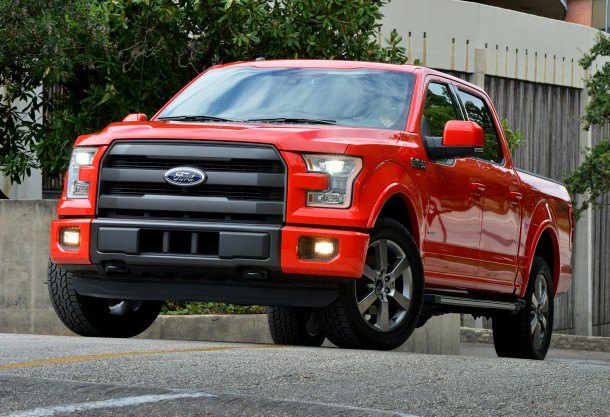
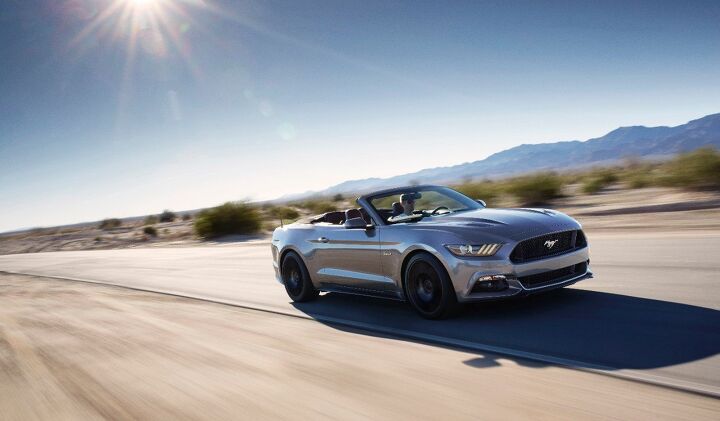

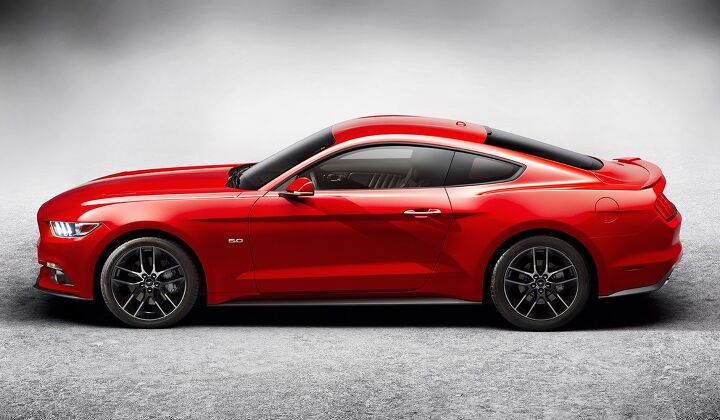


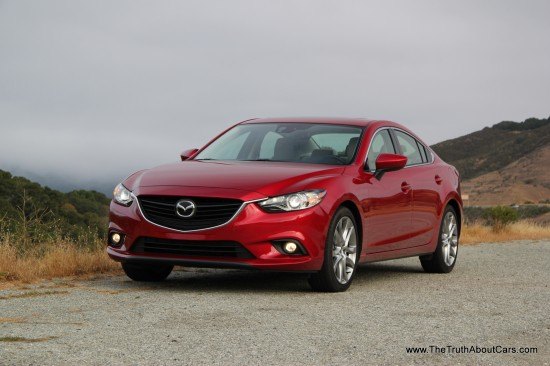
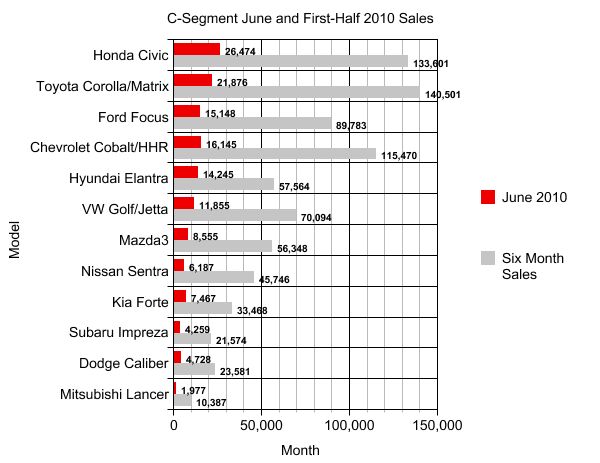












Recent Comments